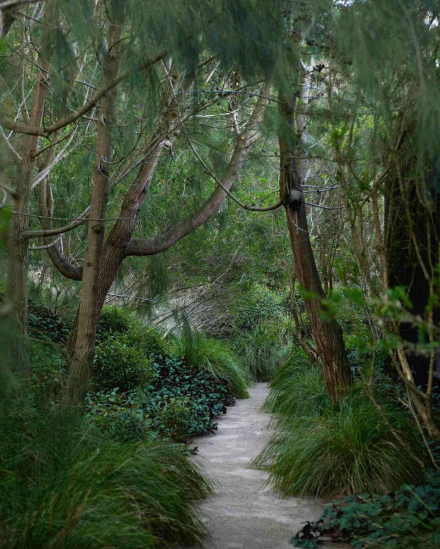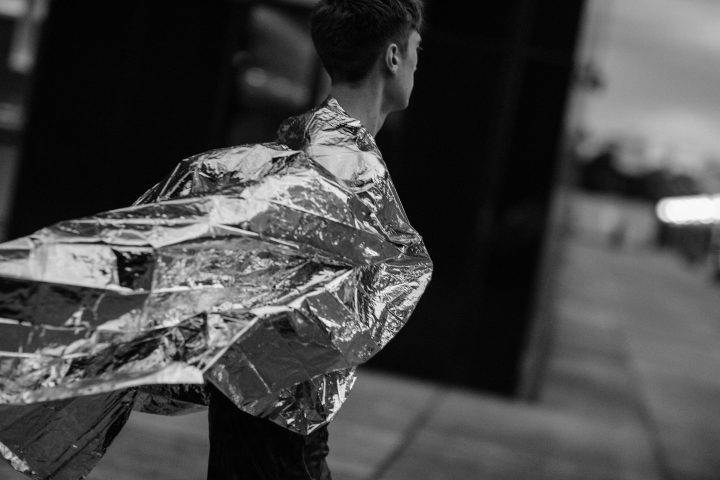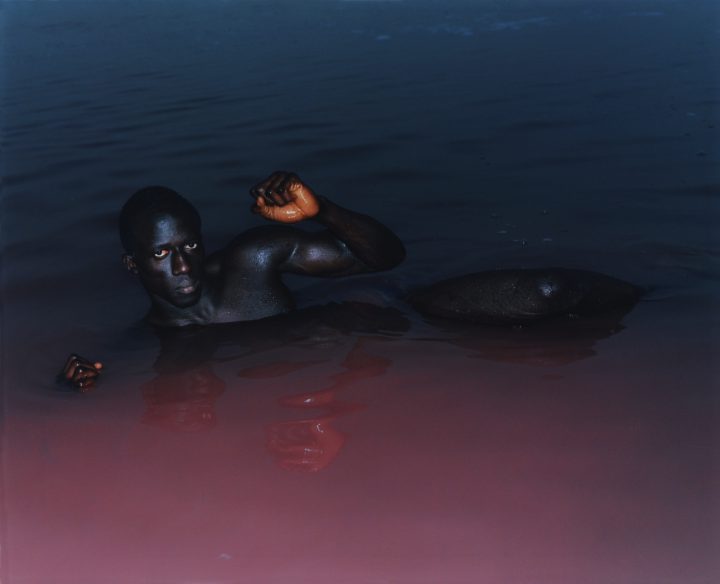
We've been appreciating the work and creative vision of Berlin-based duo Jacob Klein and Nathan Cowen, better known as Haw-Lin Services, for many years and last month they returned —after last Summer's exhibition 'Shows You' at the HVW8 Gallery— with another inspirational project. Created in collaboration with a second duo we hold in high regard; Geckeler Michels and Schroeder Rauch, the Haw-Lin guys were responsible for the complete redesign of Berlin's reopened No74 store, which became adidas’ first select store worldwide when it opened its doors in 2008, followed by Parisian No48 in 2013. The new vision for the Berlin store brings a fresh elan, combining clean displays in sharp lines in a toned down color palette, complemented with floating linear lighting that both represents Haw-Lin and adidas perfectly — resulting in a rich minimalist space with beautiful silent details, which above all puts focus on what's on display: the broad variety of different lines being designed under the adidas umbrella. [ Continue reading ]

When we spoke to April77 and Satisfy founder Brice Partouche last October, he promised that the coming third collection of his new subversive movement in athletic gear would embody the complete ambition that formed the incentive to start the new endeavor, launched about a year ago. Despite taking up a rather unique position in the existing field of performance-focussed running apparel from the very beginning, in his own words; the first two collections still missed something, whether that be in the cultural references infused in them or the high performance elements, being as strong a component in the Satisfy products as all the other brands doing running gear.
Like everything else beautiful in life, the next level to be found in the Spring/Summer 2017 collection —in stores very soon— lays in the details, both when it comes to the individual pieces as which ambition the new designs overal represent. The new collection still finds itself aesthetically akin to the earlier designs, but the extreme refinement presents the high future ambition for the brand. With Partouche referring to Martin Margiela as a key inspiration for what Satisfy could be, the way space blankets (used to warm up marathonrunners after the race) have become part of the collection, still fitting the overal punk aesthetic, honors the high stakes inspiration in an ambitious, elegant manner and exemplifies the extraordinary vision where Partouche wants to take Satisfy in the future. (Which can't be said for most people that currently find their 'inspiration' in the work of the genius Belgian visionary...)
We can only look forward where Partouche will take Satisfy, the soon to be released collection can only lead to more greatness, taking up a unique and highly ambitious position in the running universe, which we find a lot of inspiration in and therefore applaud loudly. [ Continue reading ]
Harley Weir presents her first solo-exhibition at Foam in Amsterdam

The official opening is tonight, but the very first solo-exhibition of the talented British photographer Harley Weir at Foam in Amsterdam has been open for the public since the 2nd of December and we had a chance to see it for ourselves this week. It marks an important step in the rise of the 28-year-old, who has been receiving international acclaim and a growing attention in the last years, after kick starting her career at age 17, when she shot her first fashion editorial for Vice UK. Although presentation-wise the exhibition at Foam isn't the best thing we have ever seen, the curation of the imagery shows the incredible talent of Weir, far transcending the specific subject-matter, showing an intriguing coherent body — undisputedly making her one of the most interesting voices in contemporary photography.
The title of the exhibition, 'Boundaries' refers to what is ultimately dissolved in the work of the photographer. But even as she crosses the lines of what usually holds people apart, on personal as well as political levels she is not out to make any statements. The exhibition therefore reads, as Weir specifically intended it, as a visual poem, open to interpretation. The exhibition shows a mix of Weir’s ethereal portraiture with still life images and reportage work in Israel, India, Jordan and the series that struck us deeply when we encountered it on Dazed some weeks ago: the haunting depictions of the temporary homes at the refugee camps of Calais. Whatever it is in front of her lens, Weir always seems to get to its essence by framing that what seems to speak to her most, creating captivating visual narratives that stick. [ Continue reading ]

Although we aren't big basketball aficionados, when Justin Montag (Editor-in-Chief), Chris Dea (Art Director) and Brock Batten (Business Development) launched FRANCHISE magazine six months ago, a complete new perspective on the sport opened up to us. With the current state of basketball publications still being dominated by high definition, high gloss visuals, the trio found inspiration for their magazine in the European independent magazine equivalents from the world of football, who for some years now have brought a much needed contemporary vision to the traditional world of that sport, which FRANCHISE aims to introduce for basketball. Last month, marked the highly anticipated presentation of their second issue, after successfully finding a significant audience since April. The incredible new edition follows up on the debut of the magazine in the best possibly way, showing a next level in the creation of a distinct, artistic visual language and content-wise featuring an interview with legendary NBA fan James Goldstein, a fashion collaboration between Phil Oh & Kalen Hollomon, features on Stephen Baker, Sporting Life and a series named the 'Pixel Hall of Fame', amongst others.
Make sure to pick up and support this unique and exiting voice in the world of basketball. [ Continue reading ]

We recently discovered the stunning 'Grey Cobalt II' series by the Finnish photographer and visual artist Felicia Honkasalo, while browsing the greatly inspirational online archive of Aint–Bad, which is an extraordinary source for some of the most interesting photography being produced today. In recent years Honkasalo has been refocussing, both in her most recent Master's studies and the work she has been creating, beyond traditional photography into a broader visual arts direction, yet the more classical photographic series that was produced (and shared by Aint–Bad) at the end of 2014 focusses on objects, documents and photographs inherited from her late grandfather. It also already shows he free approach in experimentation with the still images, juxtaposing different genres of photography to create a narrative that both shows an interesting composition of different aesthetics and evokes an emotional reaction and the questions of what lays behind the depicted. Having never known her grandfather, she uses the narrative of remembrance to reconstruct him through his world that has ceased to exist — portraying rock matter, technical drawings of blast furnaces, and an encyclopedia worth of books on metals and mining, which together symbolizing a man and his world, that she never really knew, but inherently connected to her by blood. We are really inspired by both her aesthetic choices and the emotional narrative that transcends the imagery: incredible! [ Continue reading ]

We've been great admirers of Dutch ceramic artist Carolein Smit for years and as we failed to write about the last time we were able to experience her haunting creations in real life during her The Flatland Gallery solo exhibition in 2015, we would like to revisit her latest presentation of new work that closed last October. Named 'Primordial Soup', the group exhibition at James Freeman Gallery in London, presented the work of Chris Berens, James Mortimer and Sam Branton, but what stood out (for us) beyond their paintings were the incredible new creations of Smit that brought the show the true emotional tactility as promised by the theme. This motive behind the curation of the four artists focussed on trusting instinct over reason, which in the eyes of Freeman has become a rarity nowadays, with the implication being that it is a lack of discipline to be tamed. Nevertheless, unfettered magical thinking still sits at the core of the artistic practice of numerous interesting artists, allowing those creators to tap into (more and more) hidden ideas, giving shape to things that don't make sense, but with a growing power as a subversive (and subconscious) reaction to the growing metrics-obsessed reality of today's world.
For us Carolein Smit's work forms the beating heart within this artistic genre that very likely will become more and more relevant in a society obsessing over numbers. [ Continue reading ]

Three weeks ago it was that time of the year again for a beautiful new issue by our friends of The Travel Almanac from Berlin, who presented already their 11th issue, for the first time featuring an all-female cast. The new issue’s cover stars are Isabelle Huppert, shot at the legendary Les Bains in Paris by Heji Shin, and Kacy Hill, shot in Los Angeles by Jenny Hueston. The actrice extraordinaire recounts French radicalism in the 60s and explains Continental approaches to acting. While the American songwriter and model describes the travel mindset of Middle Americans. In their own words: "in a time when interconnectedness is being disavowed and borders feel more pressing, travel is emerging as an ever more crucial and powerful subject matter. In the last five years The Travel Almanac has explored perspectives, places, and objects that evoke telling atmospheres and feelings" — with its latest issue it continues to do exactly this, forming an elegant and important voice in todays world, which we feel (and hope) will continue to be relevant long after the just presented new issue. [ Continue reading ]


















